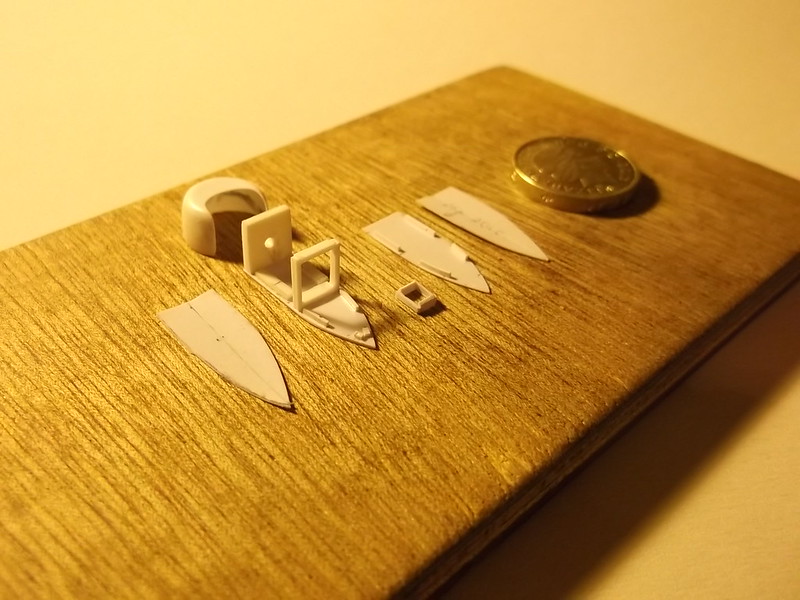Evening All,
Many thanks Ernie, John, Manni, Giuseppe and Rick for dropping by and leaving your encouraging remarks.
I decided, when I planned this build, that I would start with the cowlings and engine nacelles as I think that these will present the most difficult parts to make. Well the cowlings were fairly straightforward and I managed to finish those fairly quickly. The nacelles have proved to be otherwise. I have had three tries and have now got myself in a position where I hope I can finally assemble one which will look something like the nacelle on a real aircraft. The problem has been that the rear of the nacelle tapers and is curved at the same time. Getting 4 pieces of 20thou card to bend and form a neat and square point at the rear of the nacelle has proved to me that my intuition was correct: getting the nacelles right is probably going to be the most difficult part of this model. In fact I still do not have a complete one but I am close: the photo shows the parts of an earlier (failed attempt).

Briefly the nacelles will be made as follows:
The front is a square of 60 thou card with a hole drilled to take a pin to support the engine;
the four sides are from 20 thou card which has to be shaped to a point at the rear, but the edges have to curve. The sides are also not flat so I ran the back of my modelling knife down the centre line on the inside to score a slight outward bulge;
the top and bottom plates must have small notches cut in them to allow the struts to be cemented to the side plates and pass through the top and bottom plates. It is essential that the notches in the top and bottom line up exactly because the struts are vertical. The distance between the notches had also to be carefully measured as they have to align with the other interplane and cabane struts, and the nacelles have to be in the correct position with respect to the wings etc.;
I put small pieces of scrap strip along the edges of the top and bottom plates to help to keep the structure square and hold the corners while they dry out;
4 struts per nacelle had to be shaped from 20 x 30 thou Evergreen strip.
The struts were glued to the nacelle sides, formers put on to the bottom plate to help keep the whole thing square and then the top and side plates were cemented in place. The the fun began. Getting the four plates to come together at the rear to form a neat symmetrical shape, stay in place while I tried to secure them with liquid cement and not get cement everywhere except along the join, and then hold their shape while the cement dried proved to be a little tricky. In fact on the first attempt I managed to get an odd shape, cement everywhere and the struts were not properly aligned, so it went into the bin. The second attempt was better but I did not get the right curves on the sides and top and bottom plates so I decided to abandon that one too. Instead I decided to start work on the wings...
I have now got a the parts ready for the third nacelle and I will change my method of assembly to try to avoid the glue everywhere problem: I will assemble the forward part of a nacelle where everything is square and then join the top and one side at the rear first, allow that to dry out and then repeat the operation for the remaining side and bottom. I think this will work…
The wings are quite complex too. The trailing edge was very thin because the wing was made in a conventional manner for the forward part: two layers of canvas secured to ribs. However the rear edge of the upper surface was folded back on itself and stitched to the lower sheet to form a slope, and the trailing edge of the wing consisted of the lower sheet of canvas with the ribs exposed above. To represent this I have decided to make the wings from a sheet of 20thou card cemented to a wider strip of 10 thou card. I had sanded the trailing edge of the 20 thou strips to thin them down prior to joining the strips together: later I will reduce the step between the two sheets with paint filler. I will also represent the ribs with Evergreen strip.
 [/ur]
[/ur]
Hopefully I can show the completed nacelles in the next post.
Thanks for looking.
Stephen.